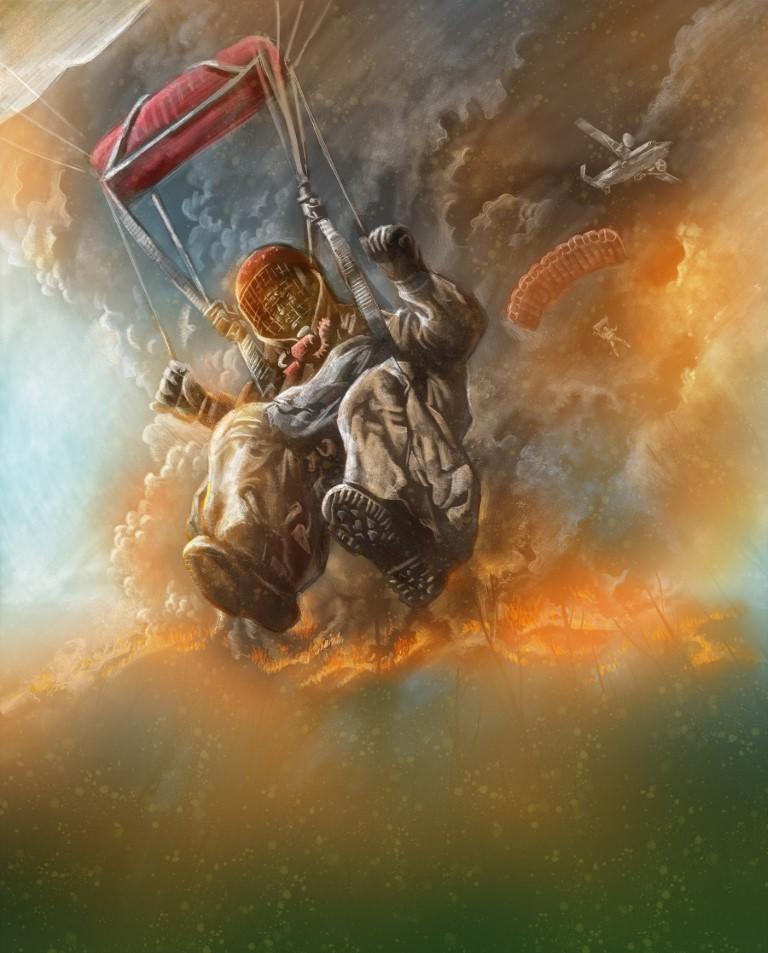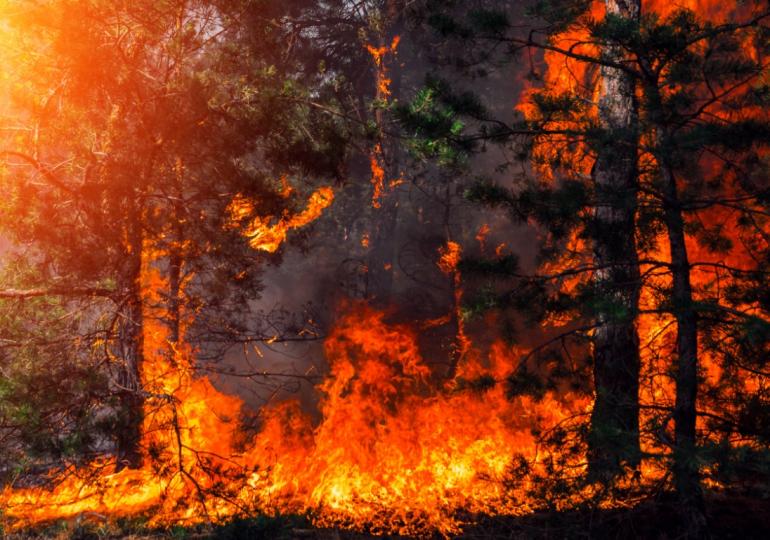A Day In The Life of a Smokejumper

Greg Anderson is a 3rd generation Montanan. His father moved his family to the Gallatin Valley in the late 1950s. Greg followed his dad horseback-riding throughout the mountains of the area, as his dad was a Game Warden for the State of Montana. It was a natural choice for him to find a job in the mountains of his own backyard. Once in the Forest Service Smoke Jumper Program, the backyard got bigger – Alaska to New Mexico, California to the Dakotas.
0800 Get up and greet the morning, have a bowl of cereal and a cup of coffee. Ponder the thoughts of what the day might bring and dress accordingly – boots, pants, t-shirt, folding belt knife and a few bucks jammed into my back pocket.
0845 Check in at the Base’s Operations Desk to update on the outcome of previous day’s fire activity and what is coming at us for the new day. Find out from Forest Dispatch in Bozeman (our controlling dispatch office) that the fire activity has increased in the GYA (Greater Yellowstone Area), the primary area the WYS (Yellowstone Airport) base serves.
0915 A fire call is received from Bozeman dispatch to respond to a fire on the Bridger-Teton Forest. Jumpers are expected to suit up in 5 minutes and be ready for inspection by the Spotter (or crew chief, if you will) before getting on the aircraft.
0951 Props turn on our plane, Jumper 13( J-13). It taxis to runway 19 and is ready for takeoff at West Yellowstone Airport.
1012 The Spotter on J-13 calls Bozeman Dispatch for the routine 15-minute safety check-in, gives them our location and tells them we will be switching to the B-T Forest Dispatch for the next check-in. The spotter then calls B-T Dispatch and gives them our location, and an ETA to the Firebox Fire, as it is now called. During the flight the jumpers are swapping stories and enjoying the view of the Greater Yellowstone Area, which is awesome.

1035 The Spotter calls B-T Dispatch and confirms the GPS and map location is correct for the Firebox Fire and will be dropping 4 jumpers on it. The inflight door is opened and cool, fresh air circulates through the cabin. The jumpers know it is time to put al their training to use.
The Spotter drops weighted 10’ long crepe paper streamers directly over a safe opening near the fire. Spotter tells the pilot over intercom “streamer away.” The pilot knows to circle the aircraft so the spotter and jumpers can watch streamers descend, giving them a clue as to what the winds are doing. The streamers land 150 yards past the spot. The pilot knows to now fly from the streamers to the spot and the spotter lets the second set out upwind of the spot. The streamers go right in. Spotter asks for two jumpers to get in the door. The parachute static lines are hooked to the static cable, spotter tells the jumpers they are all clear. First jumper gone. Second jumper follows.
1045 Two jumpers are in the air – they make sure they stay a safe distance apart on their descent to the jump spot. The first jumpers land in the spot. The J-13 is now over the exit point, and the second two jumpers exit the plane.
1055 All jumpers being on the ground and ok, time to drop their cargo. The first jumper now becomes the jumper-in-charge (Incident Commander, or IC) and asks for the cargo to be dropped in the jump spot. The highly skilled pilot flies 200 feet above the spot and signals the spotter to eject the fire boxes. With two passes the fire boxes (containing fire tools and provisions) are dropped and the J-13 climbs for altitude.
1105 Jumpers head a short distance away to a fire across a small rockslide. Once there the Jumper IC confirms their plan (with in put from the others) to dig a cup trench around the bottom of the fire then up either side and tie the line together at the top. As they progress with the line dig they are constantly watching for hazards.
1330 The line has been completed and tied up at the top of the fire. Now it is time for a break, and a chance to eat. As they eat, they discuss how they are going to fell the lightning-struck snag where the fire started.

1400 Break is over and time to get that burning snag on the ground so the fire can be controlled. A bed is prepared where the snag is going to be dropped. Most of the fuel that could burn is removed down to the soil lay. The cross-cut saw is prepared for use and two jumpers who are excellent with the cross-cut saw have the snag down in the prepared bed in short time. Now it is time to put it out by throwing dirt on it with shovels and, after it cools a bit, tearing it apart with pole skis. IC calls B-T dispatch to let them know of our progress.
2015 B-T Dispatch calls and tells us to be ready to be picked up by helicopter tomorrow morning around 0700. They are going to bring in 2 local firemen to replace us so we can get back to WYS and be ready for more fires. IC tells dispatch we will have fire worked over by 2400 and check it again in early morning.
2400 IC says “let’s get some sleep, we’ll have to be up by 0500 to check the fire again and get our gear up to the helispot.”
0500 We are up and grab a bite to eat and then off to check on the fire one last time before we demob.
0600 We gather at the jump spot to pack jump gear and fire tools to pack up to the helispot on the ridge about ½ miles away. Packs weight about 70-80 lbs. and the half mile is up a steep hill – quite an effort required to meet the time frame.
0700 The helicopter makes a landing on the ridge and our replacements get off. IC briefs them on the fire, as the other jumpers load the gear on the helicopter.

0708 The helicopter lands at airport near where J-13 is waiting for us.
0745 J-13 takes off from Jackson Hole airport en route to WYS airport and jump base. The jumpers reflect on the fire and how they performed and, of course, more poking fun and tales of days gone by. The view is just as good on the way back as it was on the way down.
0825 J- 13 lands at WYS and taxis to the jump base ramp. All personnel that were involved in the Firebox Fire gather in the conference room to debrief. Little discussion was needed – it was a near perfect success.
0900 Firebox Fire mission completed and in the record book. After 37 years and 561 it is still great working with such professional people.
